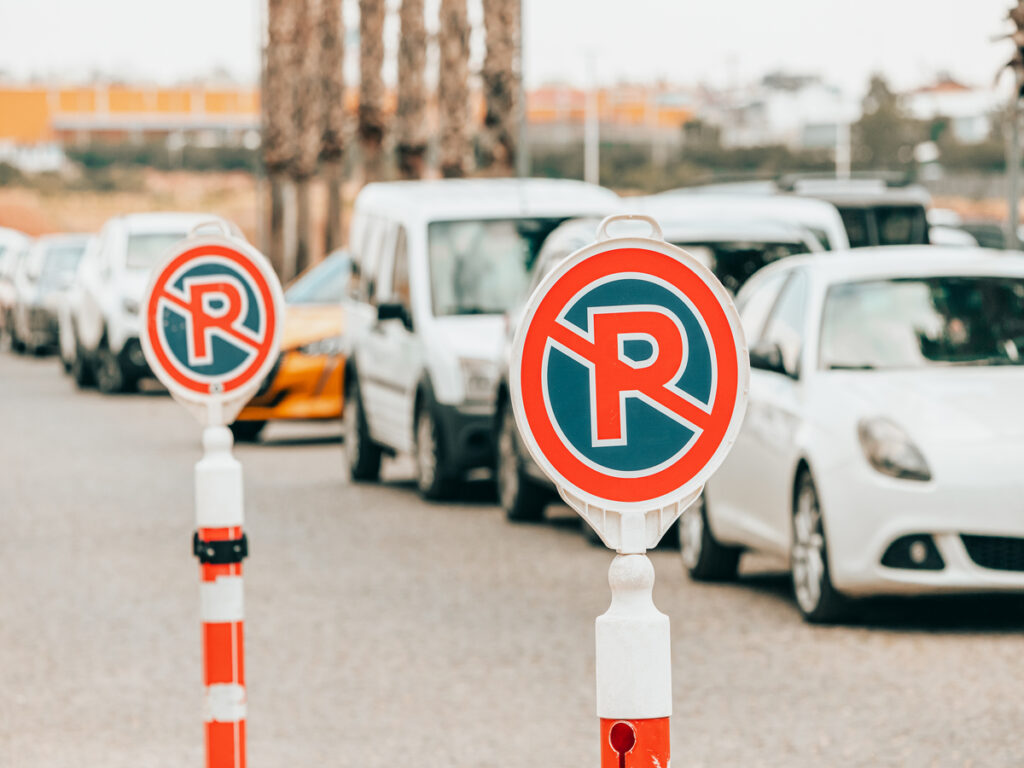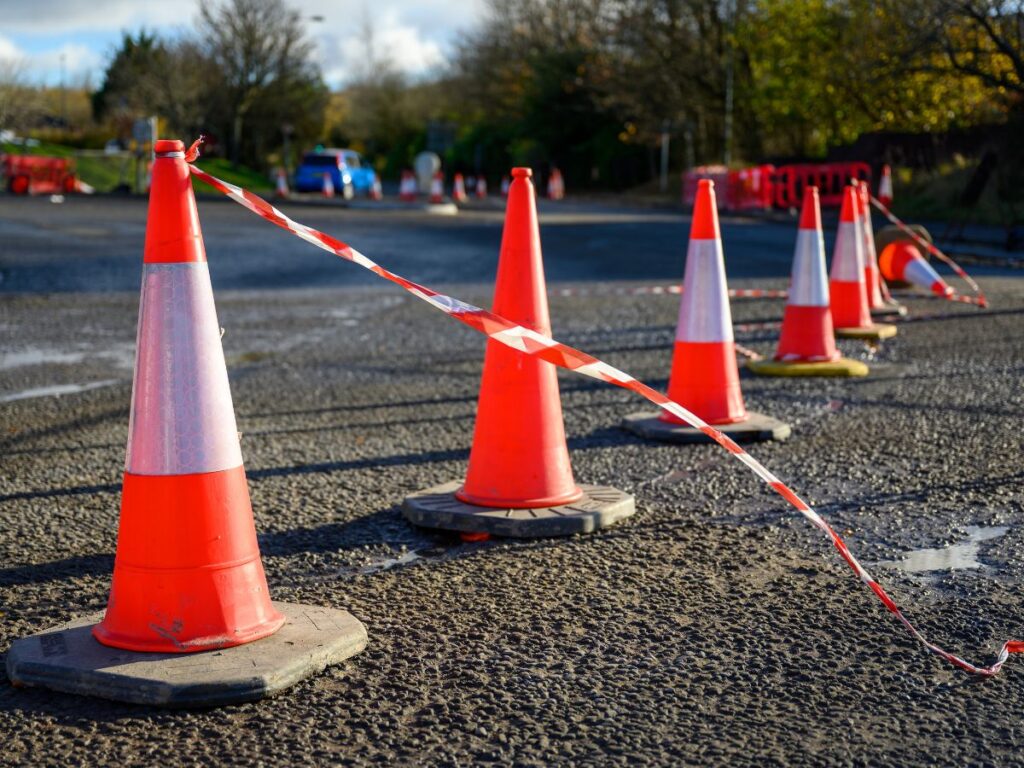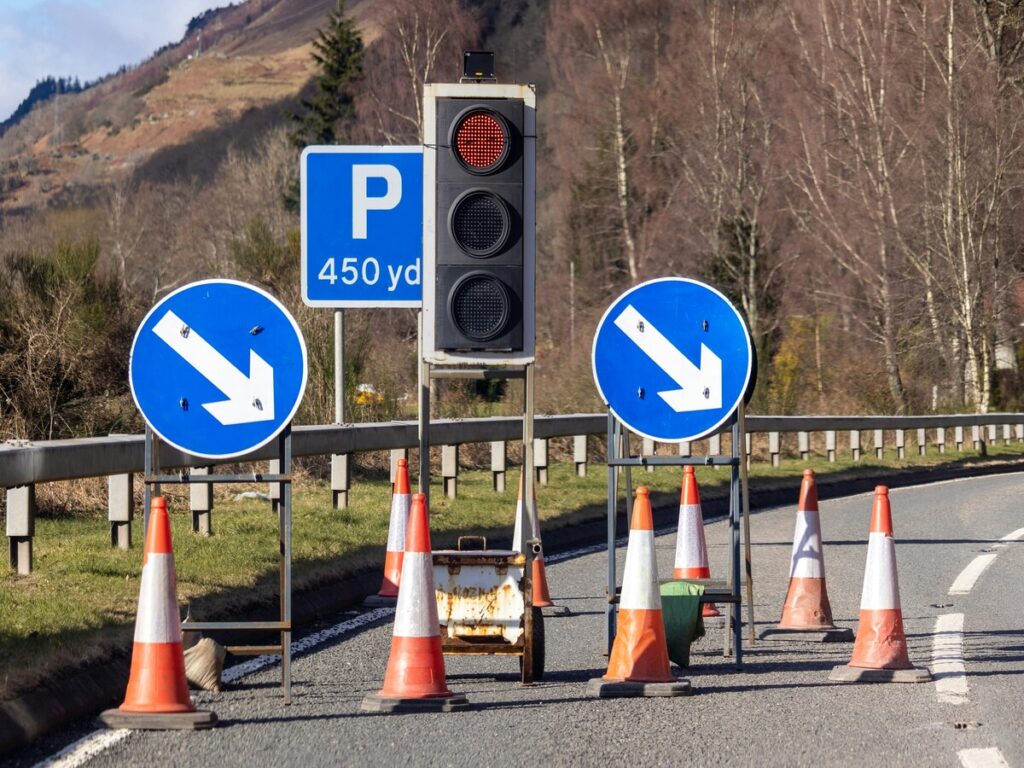
La sécurité dans les zones à basse vitesse dépend des dispositifs de contrôle de la circulation efficaces. En utilisant 12–Cônes de circulation pouces et 18-Cônes de sécurité en pouces Assure des conseils clairs pour les conducteurs et les piétons. Ces cônes de trafic empêchent les accidents en marquant les limites et en dirigeant le flux de trafic. Leur visibilité et leur portabilité les rendent idéaux pour les zones à faible trafic, Améliorer la sécurité de la circulation dans n'importe quelle zone.
Avantages de l'utilisation de cônes de trafic de 12 pouces et 18 pouces
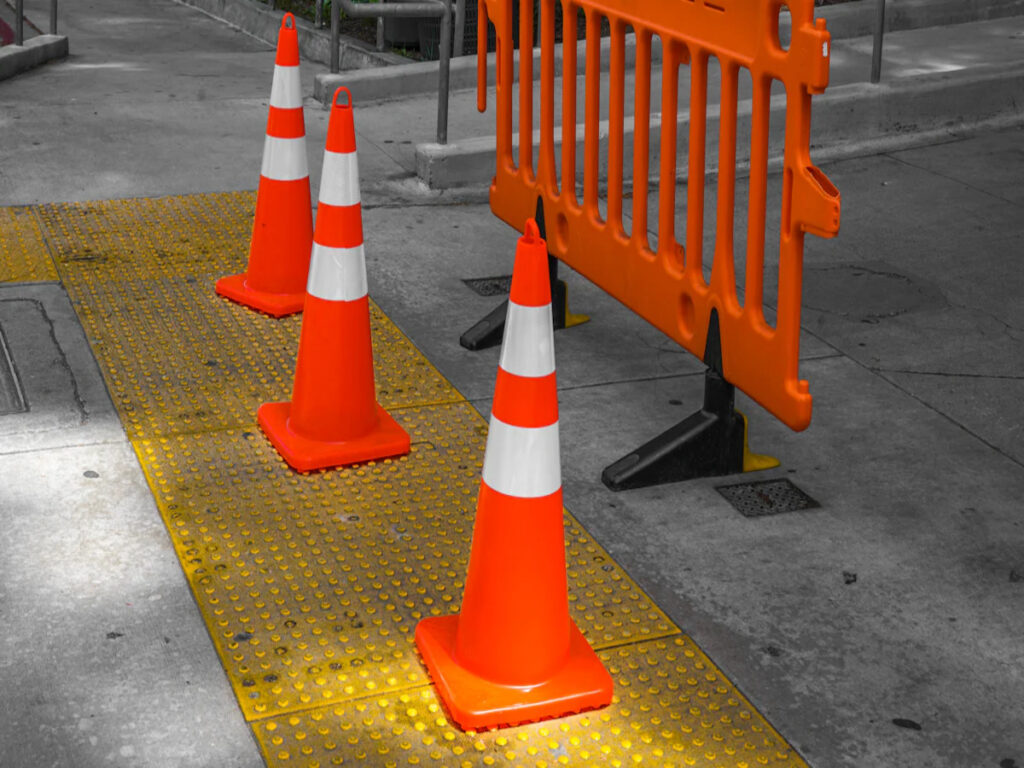
Portabilité et polyvalence des cônes de trafic de 12 pouces
Tu trouveras 12-Cônes de circulation pouces être léger et facile à manipuler, Les rendre parfaits pour des configurations rapides dans les zones à faible trafic. Peser entre 1 à 1.5 livres, Ces cônes sont idéaux pour une utilisation intérieure ou de petites zones extérieures où la portabilité est clé. Leur taille compacte vous permet de les stocker et de les transporter sans effort, Même dans les espaces limités. Que vous marquiez un risque temporaire ou que vous guidiez des piétons, Ces cônes de sécurité s'adaptent facilement à diverses situations. Leur polyvalence garantit qu'ils restent un outil fiable pour maintenir la sécurité de la circulation dans des environnements moins exigeants.
Signes OPT offres cônes de circulation qui excellent dans la polyvalence et la fiabilité, En leur faisant un choix de haut niveau pour maintenir la sécurité dans les zones à faible trafic. Ces cônes de trafic de 12 pouces sont conçus non seulement pour la facilité d'utilisation et la portabilité, mais aussi pour la durabilité et la stabilité, s'assurer qu'ils résistent à diverses conditions environnementales sans compromettre les performances.
Visibilité améliorée avec des cônes de trafic de 18 pouces
En ce qui concerne la visibilité, 18-Cônes de circulation pouces trouver l'équilibre parfait. Leur taille garantit qu'ils se démarquent des conducteurs et des piétons, Même à distance. Ces cônes de trafic sont plus visibles que les options plus petites, les rendre très efficaces pour diriger le trafic dans des zones à basse vitesse. En même temps, Leur conception compacte vous permet de les utiliser dans des chantiers ou des zones à petite échelle avec des contraintes d'espace. Peser entre 2.75 à 3 livres, Ils sont assez robustes pour rester en place tout en restant faciles à manipuler. Leur visibilité améliorée en fait un outil crucial pour améliorer la sécurité routière dans les zones où des conseils clairs sont essentiels.
RETTENTION
Les cônes de trafic de 12 pouces et 18 pouces offrent une solution rentable pour gérer zones à faible trafic. Par rapport aux cônes plus grands comme les options de 28 pouces ou 36 pouces, Ces petits cônes sont plus abordables tout en répondant aux exigences de sécurité. Par exemple, 12-Les cônes de pouces sont parfaits pour une utilisation intérieure ou des zones à faible trafic, tandis que les cônes de 18 pouces sont mieux adaptés aux chantiers à petite échelle. Le tableau ci-dessous met en évidence leurs utilisations et poids typiques:
| Taille de cône | Poids (lbs) | Utilisation typique |
|---|---|---|
| 12-pouce | 1 à 1.5 | Intérieur, zones à faible trafic |
| 18-pouce | 2.75 à 3 | Sites de travail à petite échelle, espace limité |
| 28-pouce | 7 à 10 | Haute visibilité pour les travaux routiers |
| 36-pouce | 10 à 12 | Construction de routes, haute visibilité |
En choisissant la bonne taille de cône pour vos besoins, Vous pouvez économiser de l'argent tout en assurant la sécurité de la circulation. Des cônes plus petits comme les options de 12 pouces et 18 pouces offrent une excellente valeur pour les applications à faible trafic sans compromettre l'efficacité.
Meilleures pratiques pour le placement des cônes de trafic
Espacement approprié pour une sécurité maximale
L'espacement approprié joue un rôle essentiel pour assurer la sécurité lors de l'utilisation de cônes de sécurité de 12 pouces et 18 pouces. Le Manuel sur les dispositifs de contrôle de la circulation uniformes (Mutcd) recommande un 20:1 débit pour les zones de travail. Cela signifie pour chaque 20 pieds de fermeture de voie, Le cône doit prolonger un pied. Vous pouvez utiliser cette directive pour déterminer efficacement l'espacement entre les cônes. Des facteurs tels que les limites de vitesse des routes et le type de route influencent également l'espacement. Pour les zones à basse vitesse, Placer les cônes plus près pour maintenir un contrôle de la circulation clair. En revanche, L'espacement plus large fonctionne mieux pour les zones avec un flux de trafic minimal. En suivant ces principes d'espacement, Vous améliorez la sécurité de la circulation et réduisez la confusion pour les conducteurs et les piétons.
Optsignes Cônes de trafic sont conçus pour s'aligner parfaitement avec les directives MUTCD, Assurer les normes les plus élevées de sécurité et d'efficacité de la gestion du trafic.
Techniques de rétrécissement pour guider le flux de trafic
Les techniques de rétrécissement aident à guider le flux de trafic en douceur à travers les zones de travail. Lorsque vous placez des cônes de sécurité de 12 pouces ou 18 pouces, Créez un cône progressif pour diriger les véhicules en toute sécurité. Commencez par positionner des cônes plus près au début du cône. Augmentez progressivement l'espacement à mesure que le cône progresse. Cette méthode garantit que les conducteurs ont suffisamment de temps pour ajuster leur chemin. Par exemple, Dans une zone à faible trafic, Utilisez des cônes de 18 pouces pour créer un cône visible qui se démarque des conducteurs. Un rétrécissement approprié améliore non seulement le contrôle du trafic, mais minimise également le risque d'accidents dans les zones de travail.
Adhérer aux directives MUTCD pour la sécurité des zones de travail
Le respect des directives MUTCD garantit que l'emplacement de votre cône de signalisation répond aux normes de sécurité.. Selon ces directives, 12-les cônes en pouces conviennent aux espaces privés, athlétisme, ou à des fins de formation. Cependant, seuls les cônes de 18 pouces sont homologués pour la voie publique. Utilisez cette distinction pour sélectionner la bonne taille de cône pour votre zone de travail. En plus, suivre les recommandations du MUTCD concernant l'espacement et la conicité des cônes pour maintenir la conformité. Ces directives vous aident à créer un environnement sûr et organisé, assurer un contrôle efficace du trafic dans n’importe quelle zone.
Améliorer la sécurité avec des matériaux rétroréfléchissants
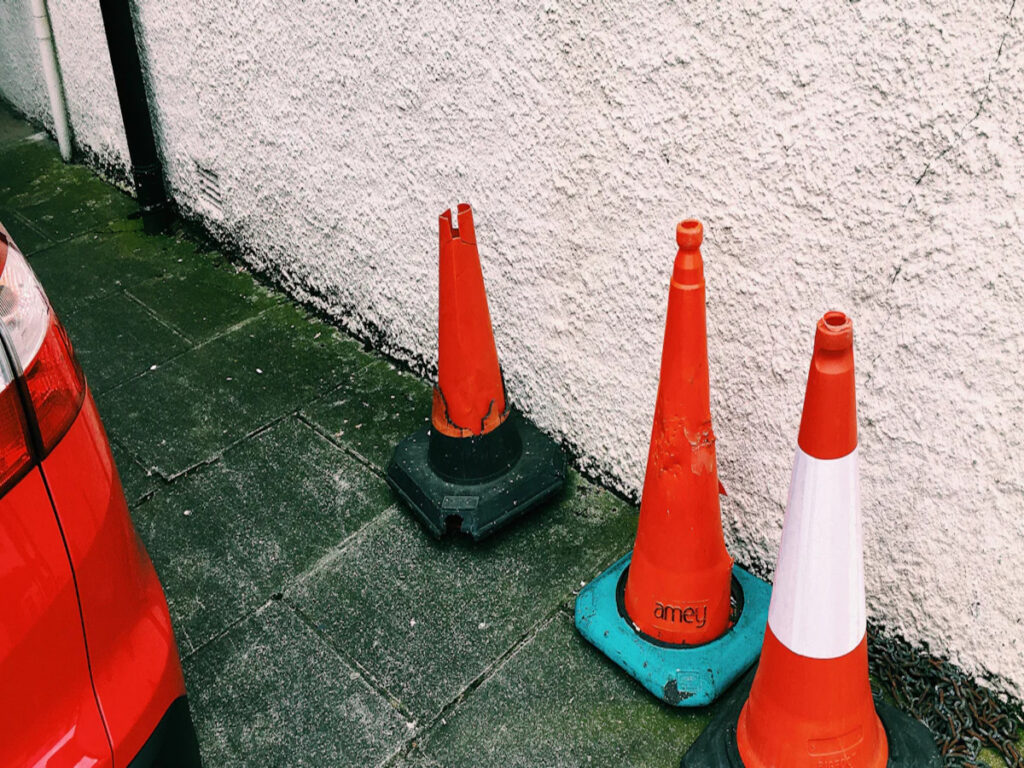
Rôle des colliers réfléchissants dans la visibilité nocturne
Les colliers réfléchissants jouent un rôle essentiel en garantissant la visibilité des cônes de sécurité la nuit ou dans des conditions de faible luminosité.. Ces colliers, souvent fabriqué à partir de matériaux réfléchissants de haute intensité comme 3M tasserie, attraper efficacement les phares du véhicule. Cela garantit que les conducteurs peuvent repérer les cônes à distance, leur donner suffisamment de temps pour réagir et ajuster leur chemin.
L'utilisation de colliers réfléchissants sur des cônes de circulation de 12 pouces et 18 pouces améliore la sécurité de la circulation en empêchant les accidents. Pour une utilisation nocturne, Les cônes doivent avoir une combinaison de cols réfléchissants de 6 pouces et 4 pouces pour répondre aux normes de sécurité. Ces colliers sont durables et résistent aux impacts répétés, les rendre fiables même dans les zones à fort trafic. Leur visibilité protège les équipes de travail et les premiers intervenants, en particulier dans les zones où l'éclairage est limité.
Les cônes de trafic réfléchissants sont essentiels pour les systèmes de trafic temporaires. Ils guident les véhicules en toute sécurité dans les zones de travail et protègent les piétons. En choisissant des cônes avec des colliers réfléchissants de haute qualité, Vous assurez une sécurité maximale pour tout le monde sur la route, Quel que soit l'heure de la journée.
| Fonctionnalité | Description |
|---|---|
| Colliers réfléchissants | 6" + 4”Colliers requis pour une utilisation nocturne |
| Matériau réfléchissant | 3M Feuilles de haute intensité pour une visibilité maximale |
| Visibilité | Critique pour les conditions de faible luminosité |
Importance de l'entretien régulier pour les surfaces réfléchissantes
Maintenir des surfaces réfléchissantes est crucial pour leur efficacité. La saleté et la crasse peuvent réduire la visibilité, surtout dans des conditions de faible luminosité. Nettoyage régulier avec du savon doux et de l'eau maintient le matériau réflexive clair et fonctionnel.
Inspectez fréquemment vos cônes de sécurité pour l'usure. Les colliers réfléchissants endommagés doivent être remplacés immédiatement pour maintenir la sécurité de la circulation. Stocker les cônes debout dans un propre, zone sèche pour éviter la déformation. Utilisez des manches ou des couvercles de cône pour les protéger de la saleté et du temps dur.
Évitez d'exposer des cônes à des conditions météorologiques extrêmes. Les couvertures de stockage abrité ou résistantes aux intempéries peuvent prolonger leur durée de vie. Une bonne maintenance garantit que vos cônes de trafic de 12 pouces et 18 pouces restent des outils fiables pour guider le trafic et améliorer la sécurité dans n'importe quelle zone.
Conseils pratiques pour une utilisation efficace du cône de trafic de cônes de trafic de 12 pouces et 18 pouces
Effectuer des inspections régulières pour l'usure
L'inspection de vos cônes de sécurité garantit régulièrement qu'ils restent efficaces et sûrs pour une utilisation. Recherchez des problèmes communs comme les fissures, bosses, ou colliers réflexives fanés. Les petites fissures peuvent être réparées avec l'adhésif, Alors que les bosses peuvent souvent être remodelées avec la chaleur. Cependant, Si les dégâts sont étendus, Le remplacement du cône est l'option la plus sûre. Protégez vos cônes de la saleté et des facteurs environnementaux en utilisant des manches de cône ou des couvercles. Évitez de les exposer à un temps dur, Comme des conditions extrêmes peuvent dégrader le matériau et réduire la visibilité. L'entretien régulier prolonge non seulement la durée de vie de vos cônes de trafic de 12 pouces et 18 pouces, mais garantit également qu'ils continuent d'améliorer la sécurité de la circulation dans votre zone.
Alignement des cônes pour une gestion optimale du trafic
Un bon alignement des cônes de sécurité est essentiel pour guider efficacement le trafic. Placer les cônes en ligne droite pour créer des limites claires et des véhicules directs ou des piétons en toute sécurité. Utilisez un espacement cohérent pour éviter la confusion. Par exemple, Dans les zones à faible trafic, Aligner les cônes de 12 pouces plus près pour marquer des zones plus petites, tandis que les cônes de 18 pouces peuvent être espacés légèrement plus loin pour une meilleure visibilité. Assurez-vous toujours que les cônes sont droits et stables pour les empêcher de basculer. Cette pratique simple améliore la circulation et réduit le risque d'accidents.
Stockage et transport en toute sécurité des cônes de la circulation
Le stockage et le transport de vos cônes de circulation empêchent correctement les dommages et garantissent qu'ils sont prêts à être utilisés. Stockez toujours les cônes debout dans un propre, Zone sèche pour éviter la déformation. Empilez-les soigneusement pour éviter une pression excessive sur les cônes en bas. Utilisez des manches ou des couvercles de cône pour les protéger de la saleté et des facteurs environnementaux. Évitez une exposition prolongée à des conditions difficiles en les gardant dans une zone abritée. Ces pratiques aident à maintenir la qualité de vos cônes de sécurité, s'assurer qu'ils restent des outils fiables pour la gestion du trafic.
Conseil: Les inspections régulières et le stockage approprié améliorent non seulement la durabilité de vos cônes, mais aussi les coûts en réduisant le besoin de remplacements fréquents.
L'utilisation de cônes de trafic de 12 pouces et 18 pouces améliore la sécurité dans les zones à faible trafic. Les cônes de 12 pouces fonctionnent bien à l'intérieur ou dans des environnements temporaires, tandis que les cônes de 18 pouces offrent stabilité et visibilité pour une utilisation en extérieur. Un placement approprié garantit que les conducteurs et les piétons remarquent les dangers. Les matériaux rétroréfléchissants améliorent la visibilité nocturne, et un entretien régulier maintient les cônes efficaces. Donnez la priorité à la sécurité en choisissant la bonne taille de cône et en suivant les meilleures pratiques en matière de placement et d'entretien..

